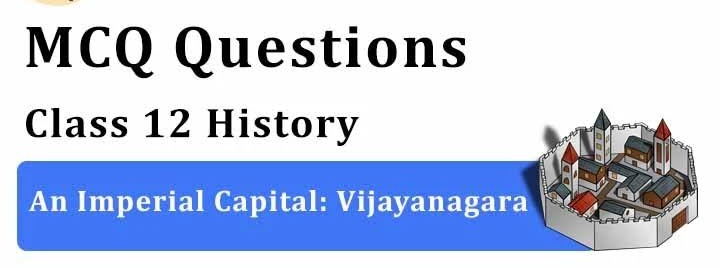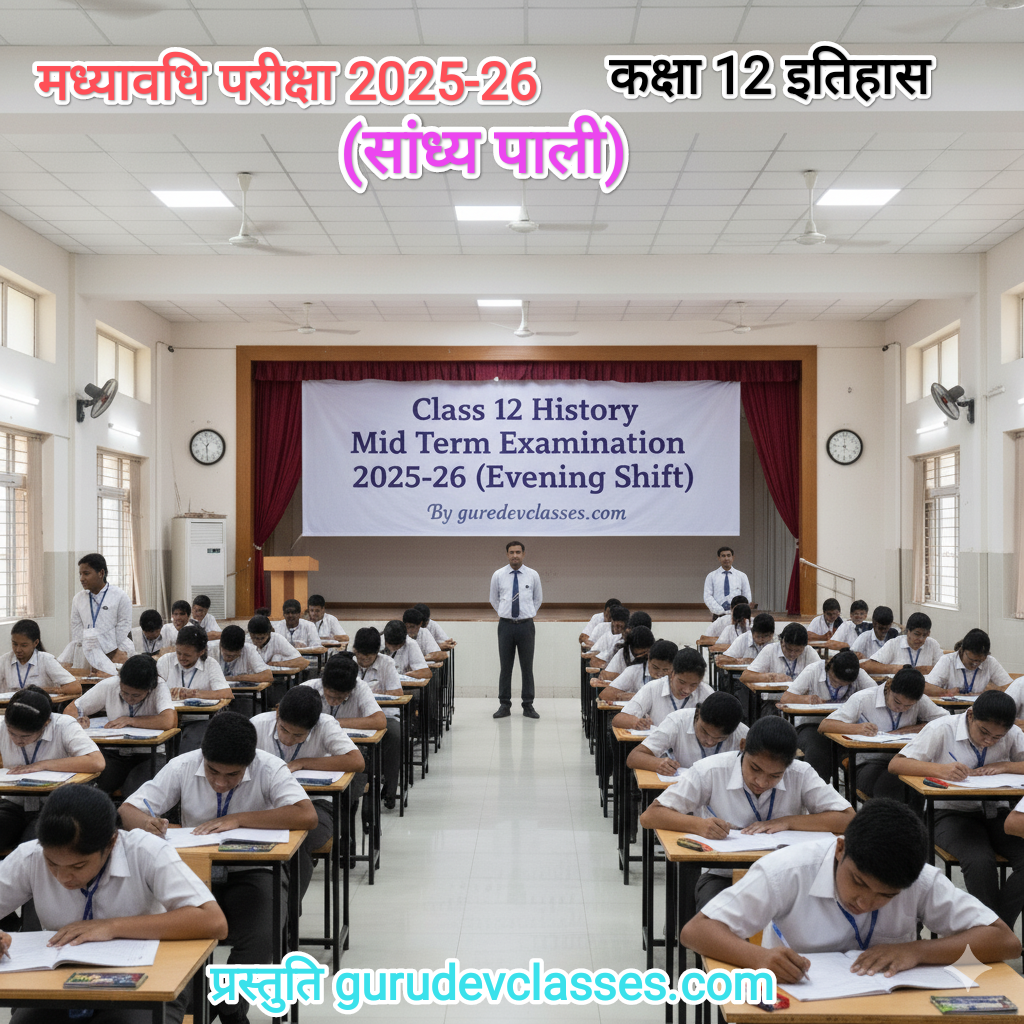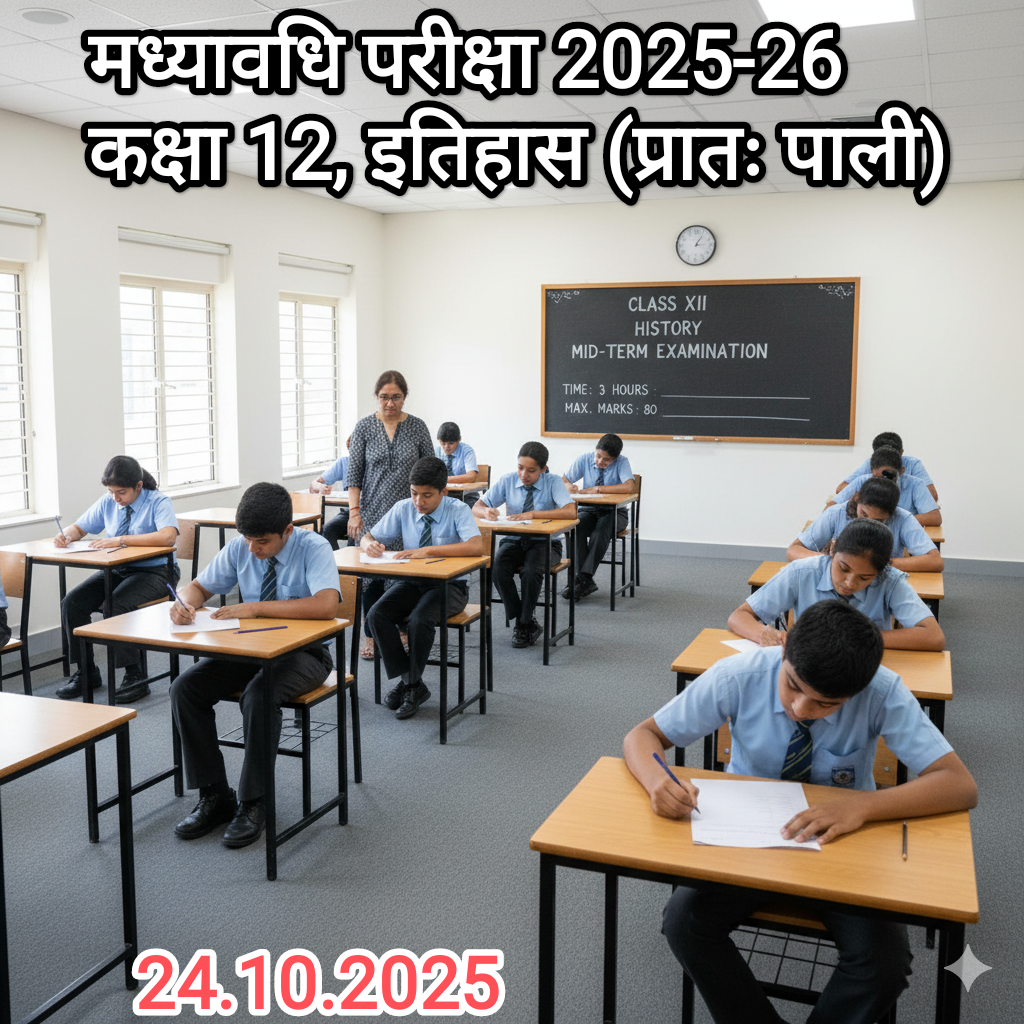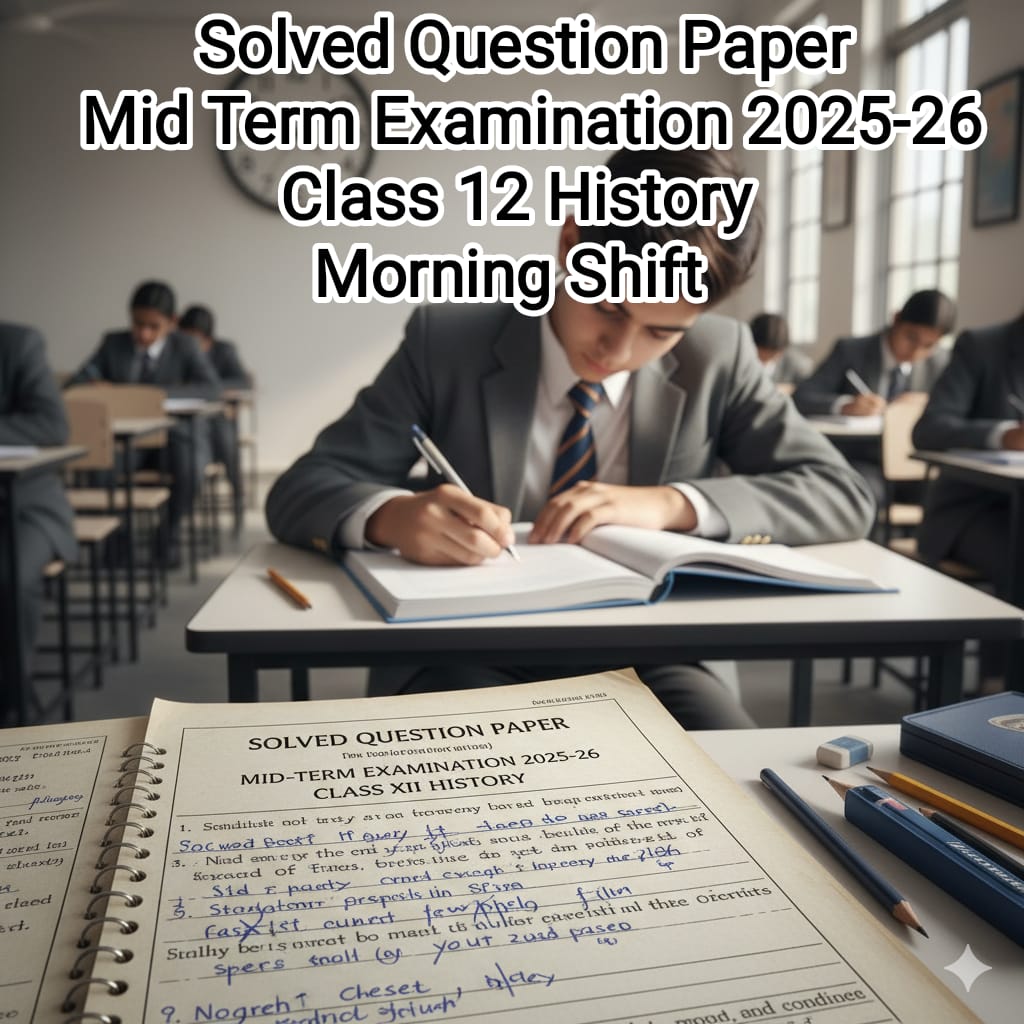Founding & Early History
Q1. Who founded the Vijayanagara Empire?
A. Krishnadeva Raya
B. Harihara & Bukka
C. Saluva Narsimha
D. Bukka Raya
Answer: B
👉 Harihara and Bukka, two brothers of the Sangama dynasty, founded Vijayanagara in 1336.
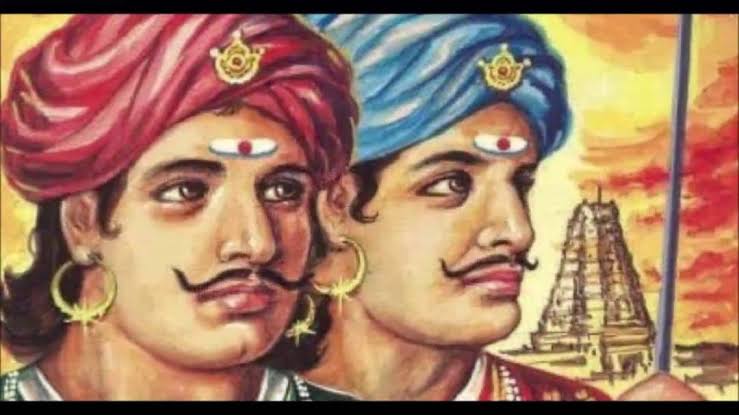
Q2. In which year was the Vijayanagara Empire established?
A. 1336
B. 1346
C. 1356
D. 1366
Answer: A
👉 Founded under the inspiration of Vidyaranya (a sage) to resist invasions and unify South India.
Q3. Vijayanagara’ literally means:
A. City of Victory
B. Fort of Kings
C. Golden City
D. Sacred Capital
Answer: A
👉 Derived from “Vijaya” (victory) + “Nagara” (city).
Q4. Another common name for Vijayanagara is:
A. Fatehpur Sikri
B. Hampi
C. Nagarjunakonda
D. Golconda
Answer: B
👉 Hampi (on Tungabhadra river) was the capital, today a UNESCO World Heritage Site.
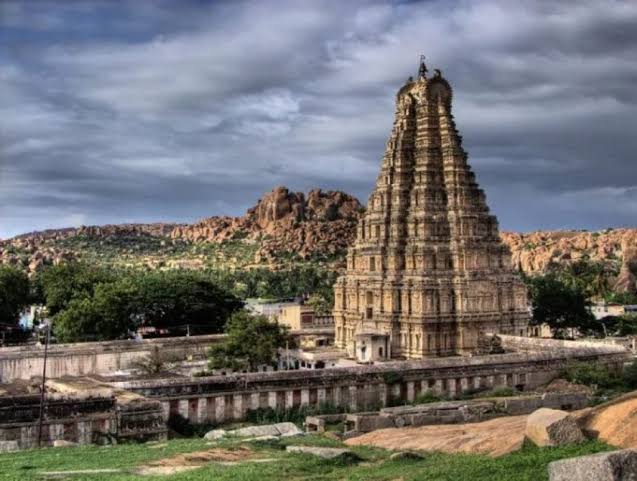
Q5. The earliest rulers of Vijayanagara belonged to which dynasty?
A. Saluva
B. Tuluva
C. Sangama
D. Aravidu
Answer: C
👉 Vijayanagara had four dynasties: Sangama → Saluva → Tuluva → Aravidu.
Geography & Urban Design
Q6. On the banks of which river did Vijayanagara rise?
A. Krishna
B. Godavari
C. Tungabhadra
D. Kaveri
Answer: C
👉 The river gave natural defense and fertile land
Q7. The main source of urban water supply in Hampi was a system of:
A. Wells only
B. Canals & tanks
C. River diversion only
D. Seasonal streams
Answer: B
👉 Ingenious tanks, aqueducts, and canals were built for agriculture and the city.
Q8. What was enclosed within the fortified enceinte of the city?
A. Only palaces
B. Only temples
C. Agricultural land
D. Only markets
Answer: C
👉 Fort walls included not just palaces/temples but also fields to ensure food supply during sieges.
Architecture & Monuments
Q9. Which building served as a royal pavilion and viewing platform?
A. Lotus Mahal
B. Hazara Rama Temple
C. Mahanavami Dibba
D. Virupaksha Temple
Answer: C
👉 Built by Krishnadeva Raya; kings viewed ceremonies and processions from here.
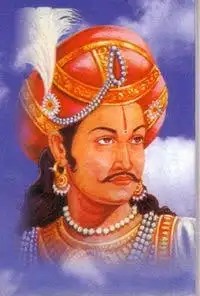
Q10. The “House of Victory” referred to which monument?
A. Lotus Mahal
B. Hazara Rama Temple
C. Mahanavami Dibba
D. Vittala Temple
Answer: C
👉 Constructed after victories in battles, used for Dasara (Mahanavami) celebrations.
Q11. Which temple has scenes from the Ramayana carved on its walls?
A. Virupaksha Temple
B. Vittala Temple
C. Hazara Rama Temple
D. Lotus Mahal
Answer: C
👉 Its walls depict Ramayana processions; royal temple for the dynasty.
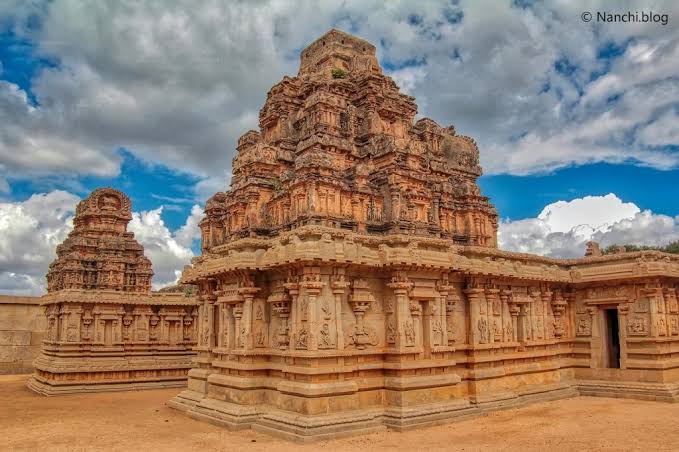
Q12. The Lotus Mahal was used for:
A. Religious rituals
B. Royal leisure and socializing
C. Military training
D. Administrative meetings
Answer: B
👉 A palace with Indo-Islamic style, possibly for queens and courtly gatherings.
Culture & Literature
Q13. “Amuktamalyada” was composed by:
A. Bukka
B. Harihara
C. Krishnadeva Raya
D. Saluva Narsimha
Answer: C
👉 Famous Tuluva king, patron of art and literature.
Q14. In which language was “Amuktamalyada” written?
A. Sanskrit
B. Telugu
C. Kannada
D. Tamil
Answer: B
👉 Though he knew Sanskrit and Kannada, Krishnadeva Raya wrote in Telugu.
Administration & Political System
Q15. What was the Amara-Nayaka system?
A. Religious reform
B. Military-administrative system
C. Architectural style
D. Land tenure system
Answer: B
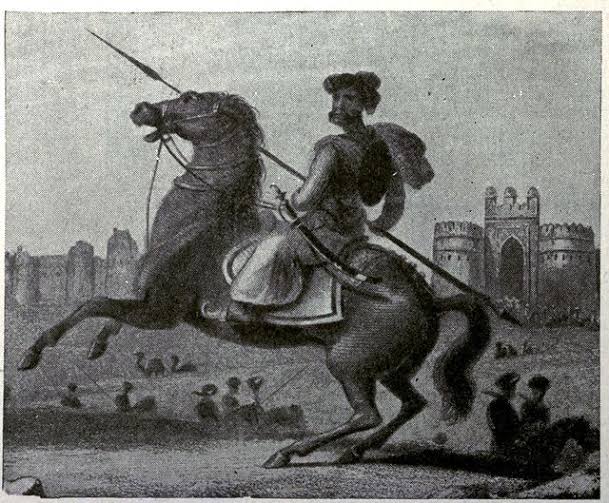
Nayakas were granted land for military service, similar to feudal lords.
Q16. The Amara-Nayaka system derived many of its features from the:
A. Iqta system of Delhi Sultanate
B. Feudal system of Europe
C. Mansabdari system of Mughals
D. Zamindari system
Answer: A
👉 Both were revenue assignments in return for services.
Key Historical Figures
Q17. Who acted as Vijayanagara’s ambassador to the Sultanates and met European travelers?
A. Domingo Paes
B. Abdur Razzaq
C. Duarte Barbosa
D. Fernao Nuniz
Answer: A
👉 A Portuguese traveler who left detailed accounts.
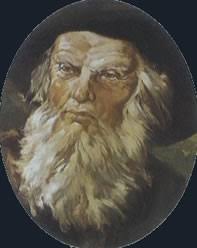
Q18. Which Persian envoy visited Vijayanagara and recorded details?
A. Barbosa
B. Abdur Razzaq
C. Paes
D. Mackenzie
Answer: B
👉 Sent by the Persian ruler of Herat; described city’s wealth and grandeur.

Q19. Who was the first Surveyor-General of India, instrumental in rediscovering Hampi?
A. Alexander Greenlaw
B. Colin Mackenzie
C. John Marshall
D. J.F. Fleet
Answer: B
👉 Rediscovered Hampi ruins in 1800.
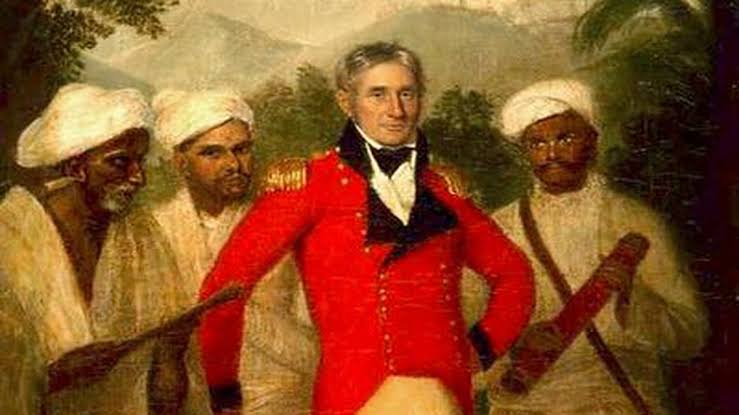
Q20. In what year were the ruins of Hampi rediscovered?
A. 1800
B. 1845
C. 1856
D. 1880
Answer: A
👉 By Colin Mackenzie, who compiled drawings and manuscripts.
Recognition & Heritage
Q21. In which year was Hampi declared a site of national importance?
A. 1976
B. 1986
C. 1972
D. 1969
Answer: A
👉 The Archaeological Survey of India (ASI) declared it a protected site.
Q22. UNESCO designated Hampi as a World Heritage Site in:
A. 1976
B. 1986
C. 1988
D. 1992
Answer: B
👉 For its outstanding architecture and cultural significance.
Decline & Demise
Q23. The Battle of Talikota (Rakshasi-Tangadi) took place in:
A. 1542
B. 1565
C. 1529
D. 1533
Answer: B
👉 Vijayanagara defeated by the Deccan Sultanates.
Q24. Who was a chief actor in the battle of Talikota from the Vijayanagara side?
A. Krishnadeva Raya
B. Rama Raya
C. Bukka Raya
D. Saluva Narsimha
Answer: B
👉 Regent of the Aravidu dynasty, killed in battle.
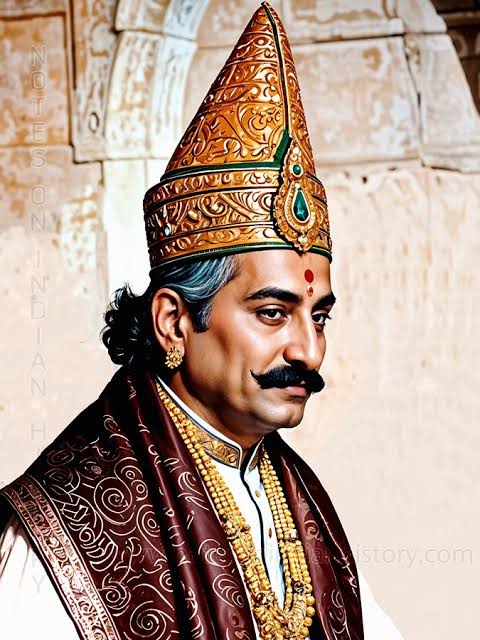
Q25. The combined forces of which Sultanates defeated Vijayanagara at Talikota?
A. Bijapur & Golconda
B. Bijapur, Ahmadnagar & Golconda
C. Ahmadnagar & Golkonda
D. Mysore & Bijapur
Answer: B
👉 Their coalition crushed Vijayanagara’s army.
Conceptual & Assertion-Type (Remaining 25)
Q26. Assertion (A): Hampi’s urban planning included fortified agriculture.
Reason (R): This helped protect food supply during sieges.
A. Both A and R are true, R explains A
B. Both A and R are true, R doesn’t explain A
C. A true, R false
D. A false, R true
Answer: A
👉 Food security was ensured even in wartime.
Q27. Assertion (A): Krishnadeva Raya belonged to the Saluva dynasty.
Reason (R): The Tuluva dynasty ruled later.
A. A true, R true, R explains A
B. A false, R true
C. A true, R false
D. Both false
Answer: B (He was Tuluva)
👉 Saluva came before Tuluva dynasty.
Q28. Assertion (A): Amara-Nayaka system increased central control.
Reason (R): It allowed decentralised military command.
A. A and R true, R explains A
B. Both true, R doesn’t explain A
C. A true, R false
D. A false, R true
Answer: C
👉 Actually, it led to decentralisation, sometimes causing rebellions.
Q29. Assertion (A): Paddy fields were within city walls.
Reason (R): This helped sustain the population during wars.
A. A true, R true, R explains A
B. A true, R false
C. A false, R true
D. Both false
Answer: A
👉 They ensured self-sufficiency during sieges.
Q30. Which term referred to the Greeks or foreigners?
A. Amara
B. Yavana
C. Rayas
D. Nayakas
Answer: B
👉 In inscriptions, “Yavana” often denoted outsiders.
Q31. Which temple’s gateway (gopuram) is a famous feature of Vijayanagara architecture?
A. Virupaksha Temple
B. Vittala Temple
C. Hazara Rama Temple
D. Lotus Mahal
Answer: A (architecturally well-known)
👉 Still worshipped today, with grand gateway.
Q32. The Mahanavami Dibba was used during:
A. Coronations
B. Ritual offerings only
C. Mahanavami festival celebrations
D. Military parades only
Answer: C
👉 Platform for Dasara celebrations and royal parades.
Q33.. The term ‘Amara’ in Amara-Nayaka system relates to:
A. Service
B. Grant
C. Commander
D. Land
Answer: C
👉 Amara-Nayakas = military chiefs or commanders.
Q34. Which goddess is also known as Pampa, and associated with Hampi?
A. Lakshmi
B. Durga
C. Parvati
D. Saraswati
Answer: C
👉 Virupaksha’s consort was called Pampa, giving name “Pampakshetra”.
Q35. Who compared Vijayanagara’s environment “from the first circuit till the entry to the city…” describing gardens and lakes?
A. Abdur Razzaq
B. John Marshall
C. Domingo Paes
D. Colin Mackenzie
Answer: C
👉 He praised its beauty, irrigation, and prosperity.
Q36. Which system governed military-chieftains and local administration?
A. Zamindari
B. Mansabdari
C. Amara-Nayaka
D. Feudal
Answer: C
👉 They maintained soldiers and gave revenue share.
Q37. Which was a major cultural centre during Vijayanagara Empire?
A. Mysore
B. Hampi
C. Golconda
D. Madurai
Answer: B
👉 Capital city, rich in temples, art, literature.
Q38. Whose policies marked the expansion of Vijayanagara?
A. Harihara only
B. Bukka only
C. Krishnadeva Raya
D. Rama Raya
Answer: C
👉 Expanded empire to Orissa, Raichur, etc.
Q39. The decline of Vijayanagara started after whose death?
A. Harihara
B. Bukka
C. Krishnadeva Raya
D. Saluva Narsimha
Answer: C
👉 After 1529, empire weakened due to succession disputes.
Q40. Vijayanagara’s architecture is noted for:
A. Mughal domes
B. Persian gardens
C. Dravidian temples & pavilions
D. Rajput palaces
Answer: C
👉 Temples with gopurams, pillared halls, mandapas.
Q41. Which structure is not correctly matched?
A. Amara-Nayaka System – Vijayanagara Empire
B. Harihara & Bukka – Founded Vijayanagara
C. Mahanavami Dibba – King’s pavilion
D. Hazara Rama Temple – New Delhi
Answer: D
👉 Hazara Rama Temple is in Hampi, not Delhi.
Q42. Who was instrumental in bringing Vijayanagara to the attention of British scholars?
A. John Marshall
B. Alexander Greenlaw
C. Colin Mackenzie
D. Fernao Nuniz
Answer: C
👉 First to survey and map Hampi ruins.
Q43. Vijayanagara’s legacy includes:
A. Mughal architecture
B. Preservation of Dravidian heritage
C. Persian influence only
D. No architectural legacy
Answer: B
👉 Safeguarded South Indian traditions against invasions.
Q44. Who wrote about Vijayanagara’s gardens and lakes in detail?
A. Abdur Razzaq
B. Mackenzie
C. Paes
D. Barbosa
Answer: C
👉 Described its irrigation and beauty.
Q45. The Tuluva dynasty succeeded which dynasty?
A. Saluva
B. Sangama
C. Aravidu
D. Mughal
Answer: A
👉 Political unity, temple patronage, and military systems all collapsed. → Tuluva (Krishnadeva Raya’s dynasty).
Q46. Which of the following was a military threat to Vijayanagara?
A. British East India Company
B. Deccan Sultanates
C. Portuguese
D. Marathas
Answer: B
👉 The combined Sultanates defeated it in 1565.
Q47. Vijayanagara’s urban design prioritized:
A. Religious monuments only
B. Trade only
C. Agriculture, defense, religion
D. Maritime trade
Answer: C
👉 Forts, temples, fields together.
Q48. Which element was central to Vijayanagara’s economy?
A. Spice trade only
B. Textile exports only
C. Agriculture & temple economy
D. Mining only
Answer: C
👉 Land revenue and temple donations were main sources.
Q49. Which traveler described the grandeur of Vijayanagara in detail?
A. Barbosa
B. Domingo Paes
C. Abdur Razzaq
D. Nuniz
Answer: B
👉 His travelogue is one of the richest sources.
Q50. The downfall of Vijayanagara disrupted:
A. Political unity of Deccan
B. Temple economy
C. Military systems
D. All of the above
Answer: D
👉 Political unity, temple patronage, and military systems all collapsed.
